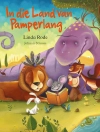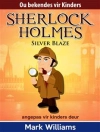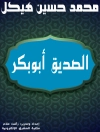The Yellow Fairy Book, compiled by Andrew Lang and first published in 1894, offers an enchanting collection of fairy tales sourced from diverse cultures around the globe. Lang’s distinctive literary style, characterized by its rich narrative and vivid imagery, transports readers into a realm of wonder and imagination. Each tale conveys moral lessons and cultural nuances, reflecting the shared human experience through the lens of folklore. The book is part of Lang’s broader series, which also includes the Blue, Red, and Green Fairy Books, demonstrating his commitment to preserving and showcasing the world’s fairy tale heritage. Andrew Lang, a Scottish poet, novelist, and folklorist, was deeply influenced by his interest in anthropology and cultural studies. His academic background and passion for folk narratives led him to compile these tales, intending to present a diverse array of stories that resonate across time and geography. Lang believed in the value of folklore as a means of understanding humanity’s collective psyche, paving the way for the rich intermingling of cultural traditions evident in his works. The Yellow Fairy Book is a delightful read for anyone captivated by the magic of storytelling. With its alluring tales, it invites both children and adults to revel in the charm of fairy lore, making it a valuable addition to any library. Whether you are seeking nostalgia or inspiration, Lang’s masterfully curated selections will ignite the imagination and offer insights into the moral complexities of life.
เกี่ยวกับผู้แต่ง
Andrew Lang (1844–1912) was a Scottish poet, novelist, literary critic, and contributor to the field of anthropology. He is best known as a collector of folk and fairy tales. A gifted storyteller, Lang possessed an extensive knowledge of mythology, religion, and ancient history, which he combined in his most famous work, the ‘Fairy Books’ series. ‘The Yellow Fairy Book’, published in 1894, is part of this highly regarded series, where Lang compiled tales from various sources and different traditions, offering them to the English-speaking audience in an attractive and approachable collection. His literary style incorporates a rich tapestry of magical creatures and adventures, presented with a balance of the fantastical elements of the stories and his scholarly approach to their origins. While Lang often cited the sources of his tales, from Norse sagas to German folklore, his contribution lies in his ability to re-tell these stories in a manner that preserved their enchantment and made them beloved by children and adults alike. Andrew Lang’s work remains significant in the canon of children’s literature; his fairy books continue to be published and read to this day, marking his enduring legacy as a custodian of cultural storytelling.












